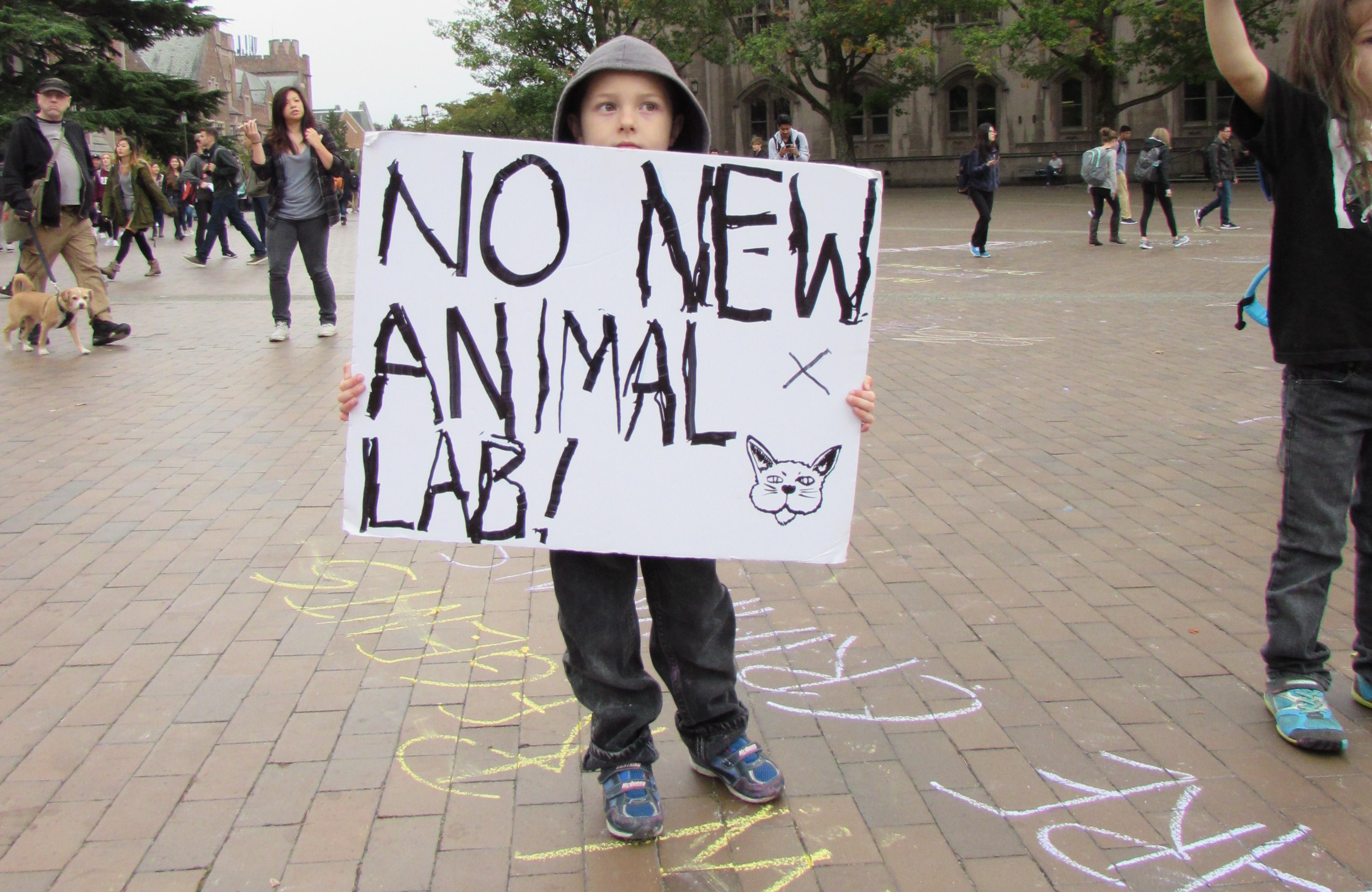“UW: Stop the torture”; “No Animal Torture Chambers”; and “No New Lab” were just a few examples of the phrases written in chalk all over the Red Square grounds at the University of Washington for the protest and march. Around 300 people showed up at the UW this past Friday to speak out against the soon-to-be-installed Skanska underground animal testing labs. Using animals as test subjects has been an issue for decades, yet people don’t know that much about it.
“An estimated 100 million animals are exploited in biomedical, aeronautic, automotive, military, agricultural and cognitive research and in consumer product testing – 95% of these animals are not even protected by the law,” states the official site for the Animal Legal Defense Fund. There are laws in place to protect the animals, such as the Animal Welfare Act (AWA). The AWA is a federal law that addresses the standard care animals receive at research facilities. Even for the 5% of animal subjects that are protected by the AWA coverage is minimal.
Also, it isn’t mandatory for labs to report non-AWA protected animals and when abuse is actually revealed, little action is taken to stop it. “Some government-mandated tests kill more than 2,000 animals every time they are conducted,” according to the People for Ethical Treatment of Animals (PETA) website. The two main leaders of the march, Amanda Schemkes and Justin Kay have been with the No New Animal Lab movement since it started under a year ago. By having this second march for the movement they hoped it would show “mass public opposition” to the labs.
When asked what had inspired Kay to get involved with the movement, he shared that last November, there was a “sham re-vote”, meaning the outcome of the vote was illegally predetermined. A good point however, brought up by Jacqueline Wilson, a Roosevelt Biology teacher, is that the UW “is (such) a major research institution that they must feel they need this additional space.”
As a scientist and UW graduate, Ms. Wilson has a mixed view on the topic. She believes that activism is important, but people need to be knowledgeable about the subject before cementing themselves on one side or the other, so as not to feed into misconceptions about animal testing. “You tend to hear the strongest opinions, the people who are at the two opposite ends of the spectrum.”
Labs may need “to do more public relations” and be as open about their work as possible. The hundreds of voices chanting “Animal testing is a lie, how many animals have to die?” shows that there isn’t the proper communication between the community and those that are installing the labs. Knowing that animal testing at the UW has been questioned for violating the AWA in the past has led to people speaking out and taking action. If the university wants to continue with the labs, they may need to be more open with the public about what is going on.
Feature Photo: A young protester displays their resilience against the new lab. Photo by Jess Flynn
